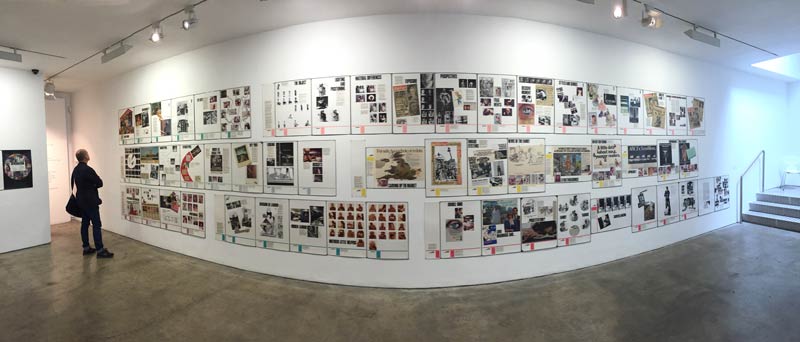
Stills is a photographic centre in Edinburgh. You can develop and print film there, attend courses on photography and design, and see what’s on in the gallery.
At the moment there is an exhibition of the life and work of the photographer Jo Spence, who was born in London 1934 and died in 1992.
She was merciless on herself and spent a lifetime examining her relationship with her mother and with the way society manages us. When she fell ill with breast cancer she documented what happened and how she was treated by the NHS.
She did phototherapy sessions with other photographers. One would act out a meaningful part of their life and the other would photograph it.
Jo did a series of herself as her mother, with all the aspects of that persona that Jo saw over the years. And she did a series of herself as a bride, and as a child, and as a woman investigating a hoover.
When she was 45 she started a degree course in Film and Photographic Arts at the Central London Polytechnic.
There she and Mary Ann Kennedy, Jane Munro, and Charlotte Pembrey formed a photography group known as the Polysnappers.
Amd their degree show was a series of panels on the subject of the politics of representation. You can see that in the image at the top of this article.
They combined commentary with bits cut out of newspapers and magazines, and the theme was clear: What is acceptable and desirable is pushed at us relentlessly. The task is to decode the message and know who is pushing it.
One panel caught my eye – and it is not directly on the theme of the politicisation of representation, but about photography and art.
There is a quote by Bill Jay that turns on its head some of the arguments about the second-class cinderella that is photography.
There is no doubt that art-photographers in America consider themselves a breed apart – one higher on the evolutionary scale of the medium – than photography in other fields. I remember discussing a set of documentary photographs with a critic and an historian who ended the conversation, to his satisfaction with the remark: ‘But of course they are not art’.
I agreed, which rather took him aback. ‘No’, I said, at their best such photographs are culturally, socially and historically more important than art…’ Why should anyone assume that Art is at the apex of a cultural pyramid and, by extension, anything that is not art is therefore less important?
…Photographers, then, have a cultural and social inferiority complex that is manifested in adolescent belligerency, an egomania that threatens to destroy the medium.